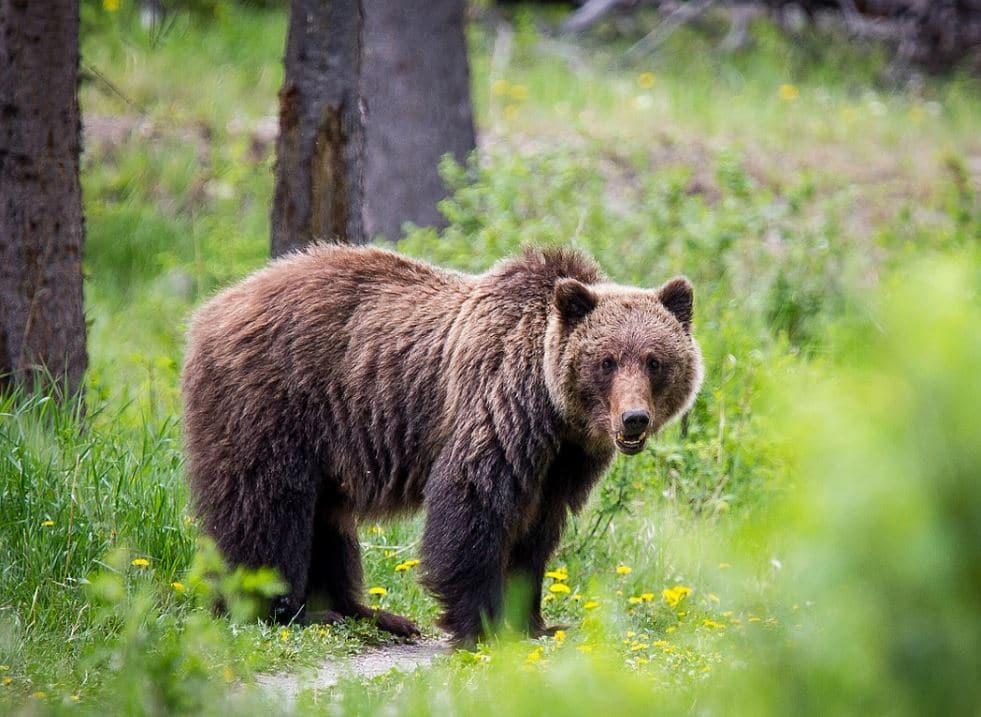Interior Department to End Grizzly Bear Restoration in the North Cascades

The Interior Department is dropping plans to reintroduce grizzly bears to the North Cascades in Washington State, citing the concerns of people who live and work in the area. The move has alarmed environmentalists who say the decision threatens the future of the bears and the ecosystems in which they should reside.
Interior Secretary David Bernhardt announced the department’s decision during a community roundtable in Omak, Wash., explaining that the Trump administration “is committed to being a good neighbor” and that the people of “north central Washington have made their voices clear that they don’t want grizzly bears reintroduced” in the area.
He went on to note grizzly bears are not in danger of extinction and assured attendees the department “will continue to build on its conservation successes managing healthy grizzly bear populations across their existing range.”
The Obama administration began developing a grizzly bear restoration plan for the North Cascades region in February 2015.
But Bernhardt said the former administration undertook the project without comprehensive public involvement or engagement.
He said shortly after President Donald Trump took office, the department began a series of public meetings, briefings and tribal consultations, during which “overwhelming opposition” was received for the plan.
Two public review and comment periods were facilitated on the Draft Environmental Impact Statement, receiving more than 143,000 comments, Bernhardt said.
Rep. Dan Newhouse, R-Wash., a long-time opponent of the restoration plan, said the secretary’s announcement is welcome news to his constituents, who, he said, “consistently shared” his concerns over introducing an “apex predator into the North Cascades.”
“Homeowners, farmers, ranchers, and small business owners in our rural communities were loud and clear: We do not want grizzly bears in North Central Washington,” Newhouse said. “I have long advocated that local voices must be heard by the federal government on this issue, and I am enormously grateful to Secretary Bernhardt for not only listening to our concerns and opinions, but for delivering this news in person.”
The Greater Yellowstone Ecosystem has been the primary focus of grizzly recovery efforts to date, and grizzly populations have increased to about 700 bears there since the animals were listed as threatened under the Endangered Species Act in 1975.
Bernhardt has said the recovery of grizzly bears in the lower 48 states is an amazing success story. Most of the efforts have focused on six areas of Idaho, Montana, Wyoming and eastern Washington state.
But environmentalists say Newhouse and the Interior Department are ignoring the majority of people who have weighed in on the restoration plan over the years.
Chase Gunnell, spokesman for Conservation Northwest, said of the over 143,000 comments the Interior Department received during the two public comment periods for the EIA, more than 130,000 support the restoration project.
Jasmine Minbashian, executive director of the Methow Valley Citizens Council, said many of the supporters actually live in Newhouse’s district, a portion of which lies within the proposed recovery area.
The North Cascades are one of six grizzly bear recovery areas in the Lower 48 United States, and the only one on the Pacific Coast, according to the U.S. Fish and Wildlife Service. At present, there are no known grizzly bears left in this recovery area.
Part of this is due to a long history of killing grizzly bears to prevent predation of livestock and boost fish populations, according to Joe Scott, international programs director at Conservation Northwest.
Scott has been advocating for the restoration of grizzly bears to the North Cascades area for over 20 years.
April Clayton, president of the Chelan Douglas County Farm Bureau, said many of those who had concerns about the project feared that when the bears inevitably ran out of food during harsh seasons, they’d spread to adjacent farms and ranches.
There were also concerns that grizzlies would deplete endangered salmon runs.
Scott said that these concerns come from a misunderstanding about the diet of grizzly bears.
They mainly forage on roots and dine on high-calorie berries found in the deep wilderness, which is part of their ecological value because they spread seeds and their root-digging tills the soil, he said.
Male grizzly bears occasionally attack and kill livestock calves, but this is rare, said Scott.
A report by the National Park Service found an average of 86 bear-livestock conflicts in the Greater Yellowstone Area, which is home to an estimated 650 to 800 bears and encompasses three states.
























